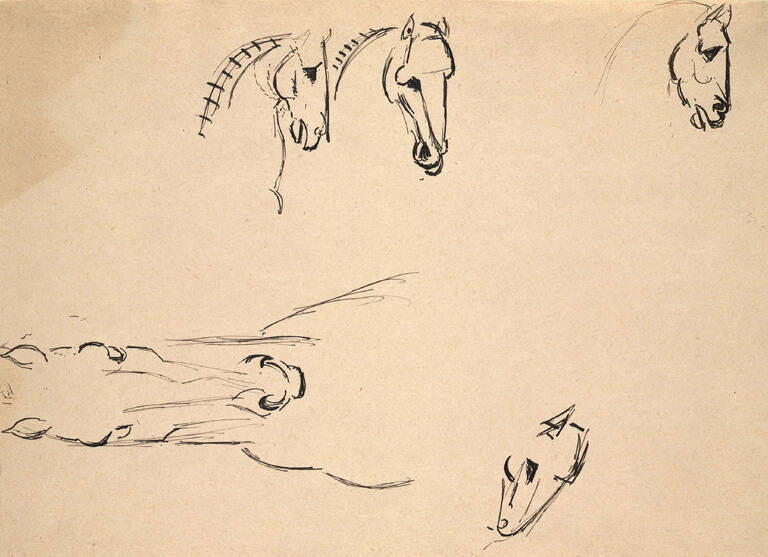Object Details
Artist
Percy Wyndham Lewis
Date
1940’s
Medium
India ink on paper
Dimensions
Image: 7 1/2 x 10 3/4 inches (19.1 x 27.3 cm)
Credit Line
Gift of Walter and Harriet Michel
Object
Number
64.0822
Wyndham Lewis (as an adult he dropped the name “Percy,” which he disliked) was one of the foundi(…)
Wyndham Lewis (as an adult he dropped the name “Percy,” which he disliked) was one of the founding members of the British avant-garde group known as the vorticists and editor of their magazine BLAST! (1914–15). At this time he developed a stark geometric style, influenced by cubism. During World War I Lewis first served on the Western Front and then as an official war artist. Afterward, and into the 1920s, he devoted much of his time to writing but following his marriage in 1930 he returned more fulsomely to his art, which seems to have influenced by Art Deco. These three drawings show Lewis’s faculty with pen and ink. In the earliest work, Mercury, as the patron god of many things, would have undoubtedly appealed to the artist. Dense areas of black emphasize the strength of this noble profile.Angel is more quixotic—playfully drawn with just a few strokes, the quick lines of ink give the feeling of flight. For the study sheet of horses, it appears that Lewis was using A. E. Popham’s book The Drawings of Leonardo da Vinci (first published in 1945) as his guide. The horse head is very similar to the one illustrated there. (“Drawing the Line: 150 Years of European Artists on Paper,” curated by Nancy E. Green and presented at the Johnson Museum January 20–June 10, 2018)
Discover More
Studies for female saint and male head (recto) and Arm, leg, and hand studies (verso)
Abraham Bloemaert
St. Christopher, and studies for the Assumption of St. Catherine and the Baptism of St. Catherine
Jacopo Palma, called Palma il Giovane













